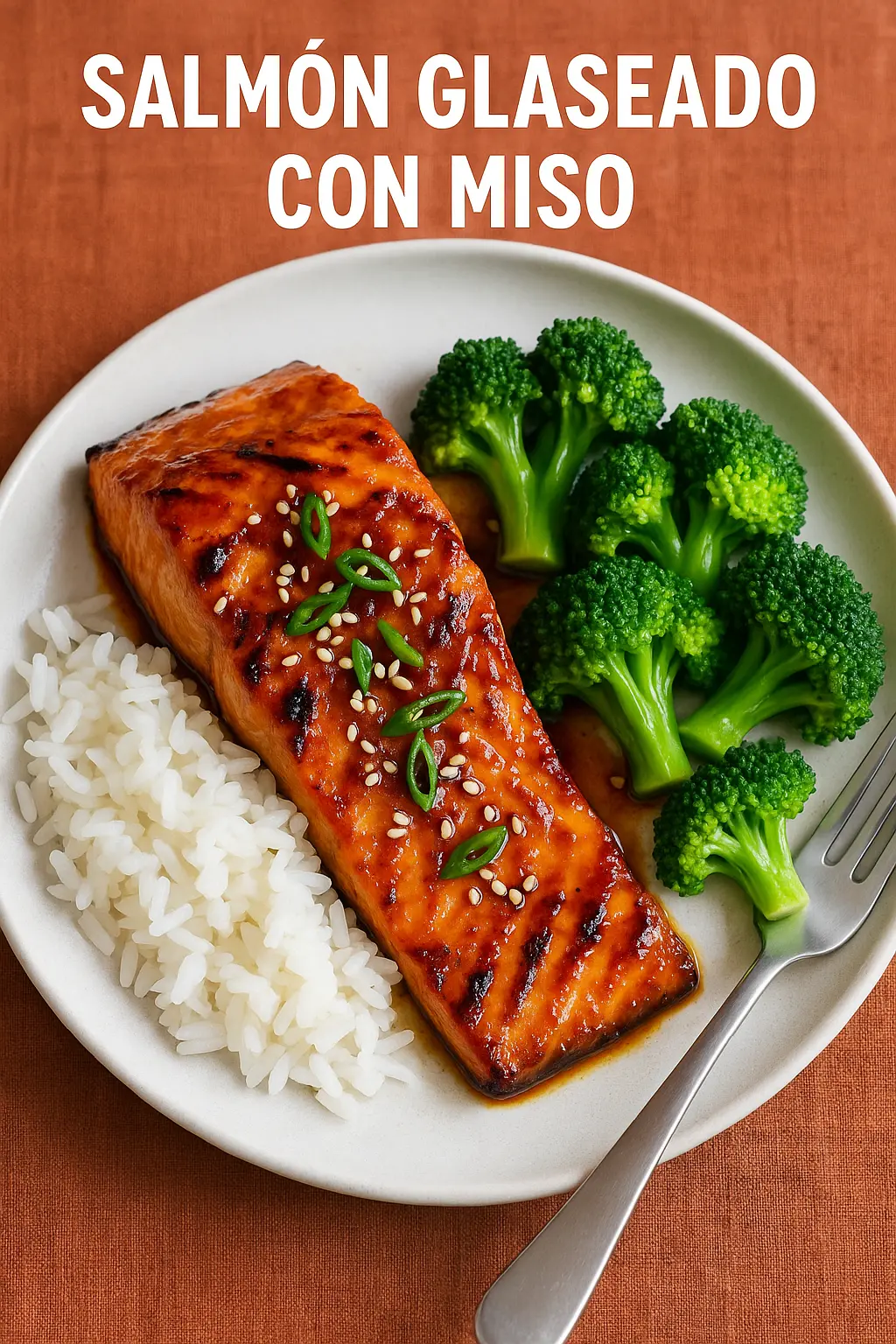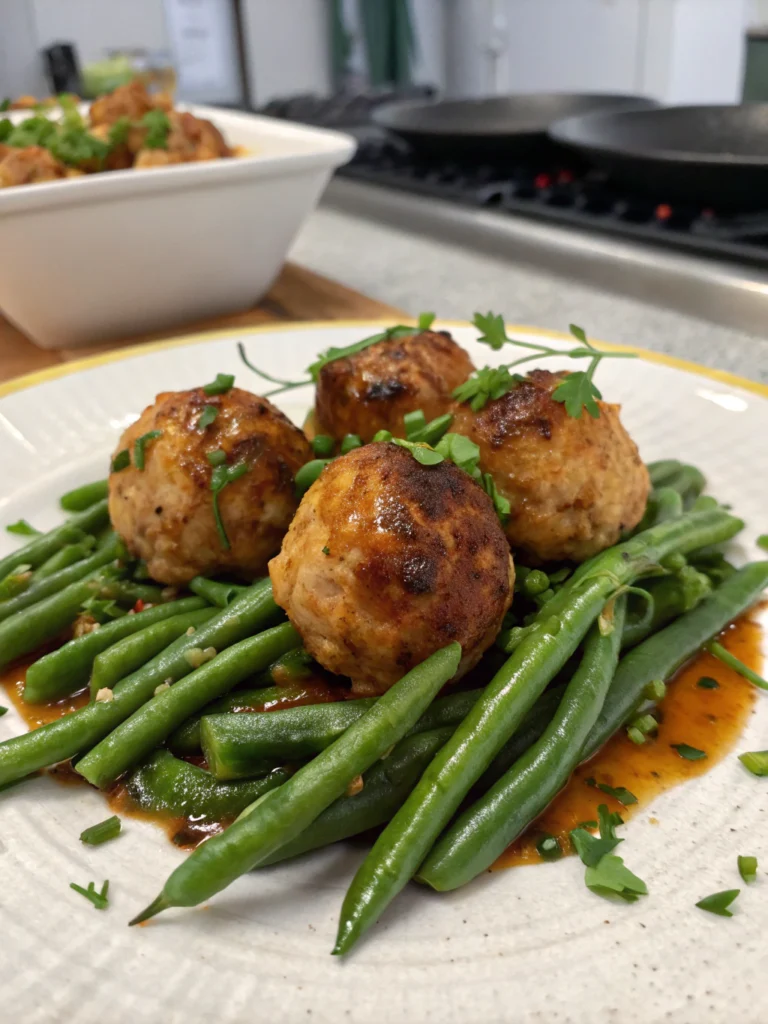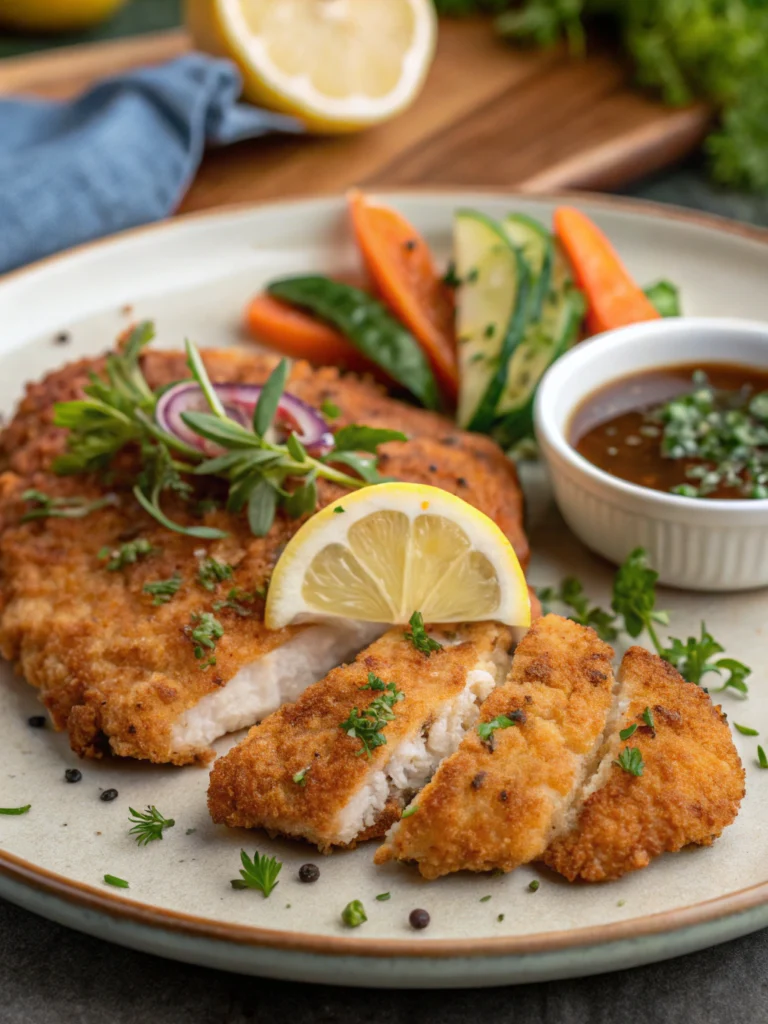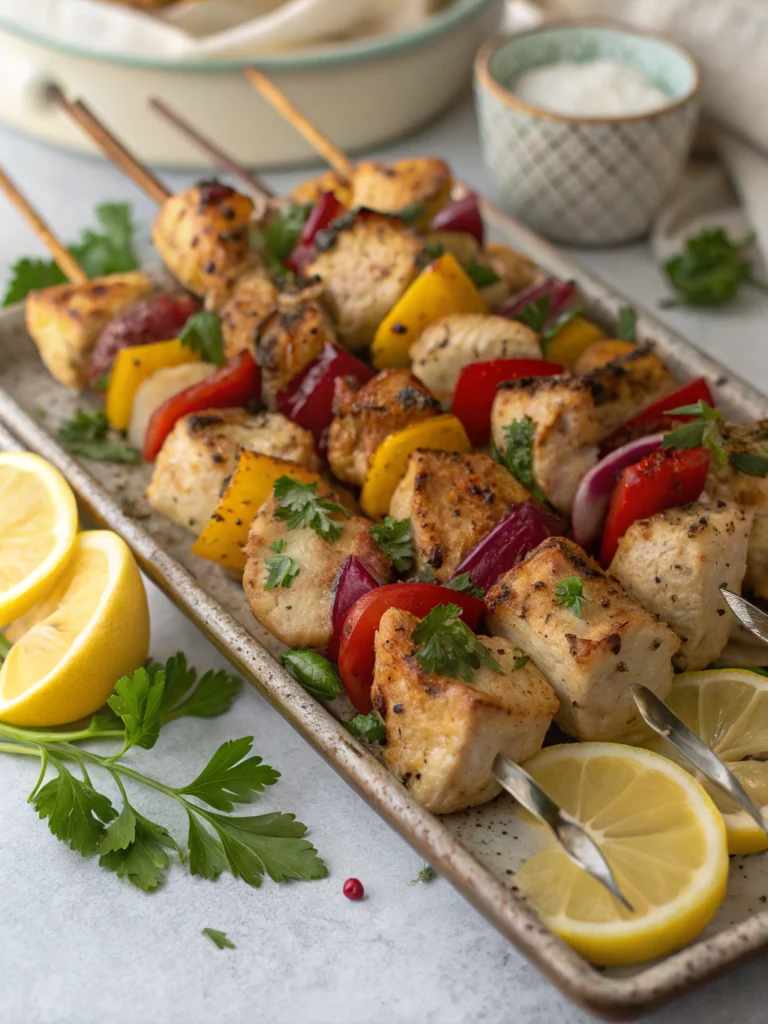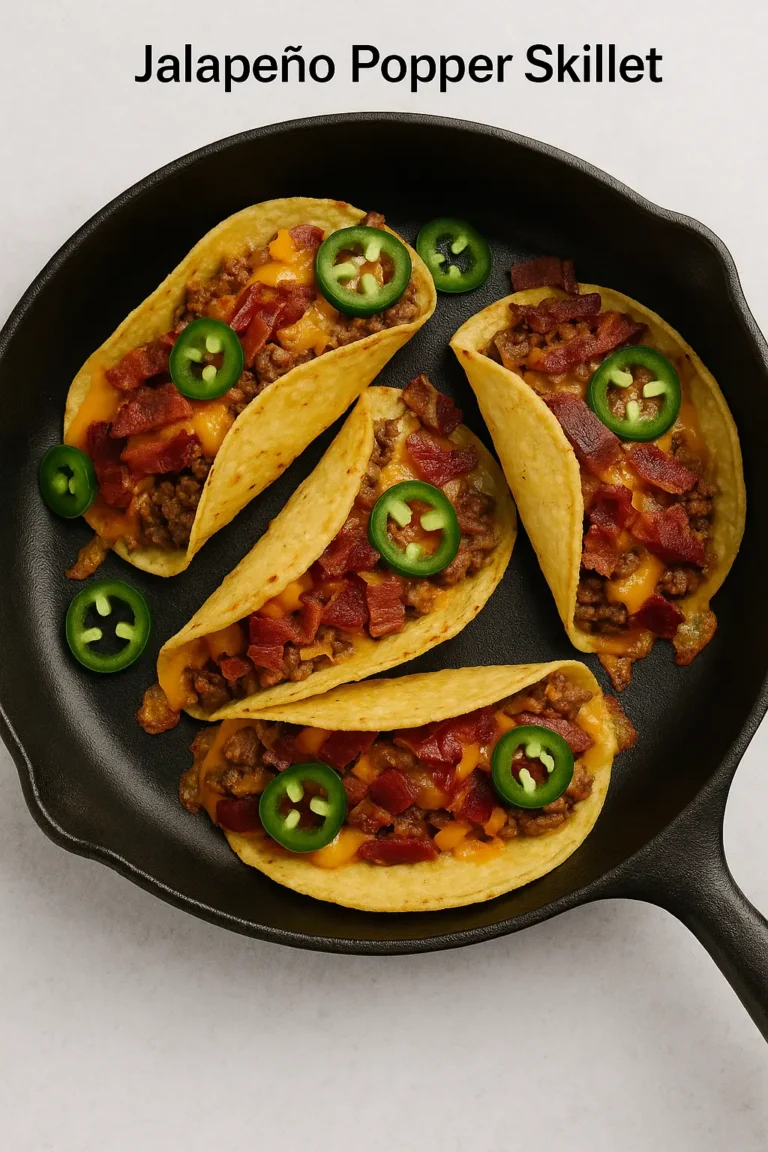Table of Contents
Introduction
Did you know that the average American spends 37 minutes preparing dinner on weeknights, yet 67% of people wish they had quicker, healthier options? Enter our game-changing 5‑Ingredient Miso‑Glazed Salmon recipe. This Japanese-inspired dish combines umami-rich miso paste with naturally fatty salmon to create a restaurant-quality meal in just 20 minutes. Perfect for busy professionals, health-conscious families, or anyone looking to elevate their weeknight dinner routine without the fuss, this Quick miso glazed salmon recipe delivers maximum flavor with minimal effort. The secret lies in the simple yet powerful glaze that transforms ordinary salmon fillets into a gourmet experience with just five ingredients you might already have in your pantry.
Ingredients List
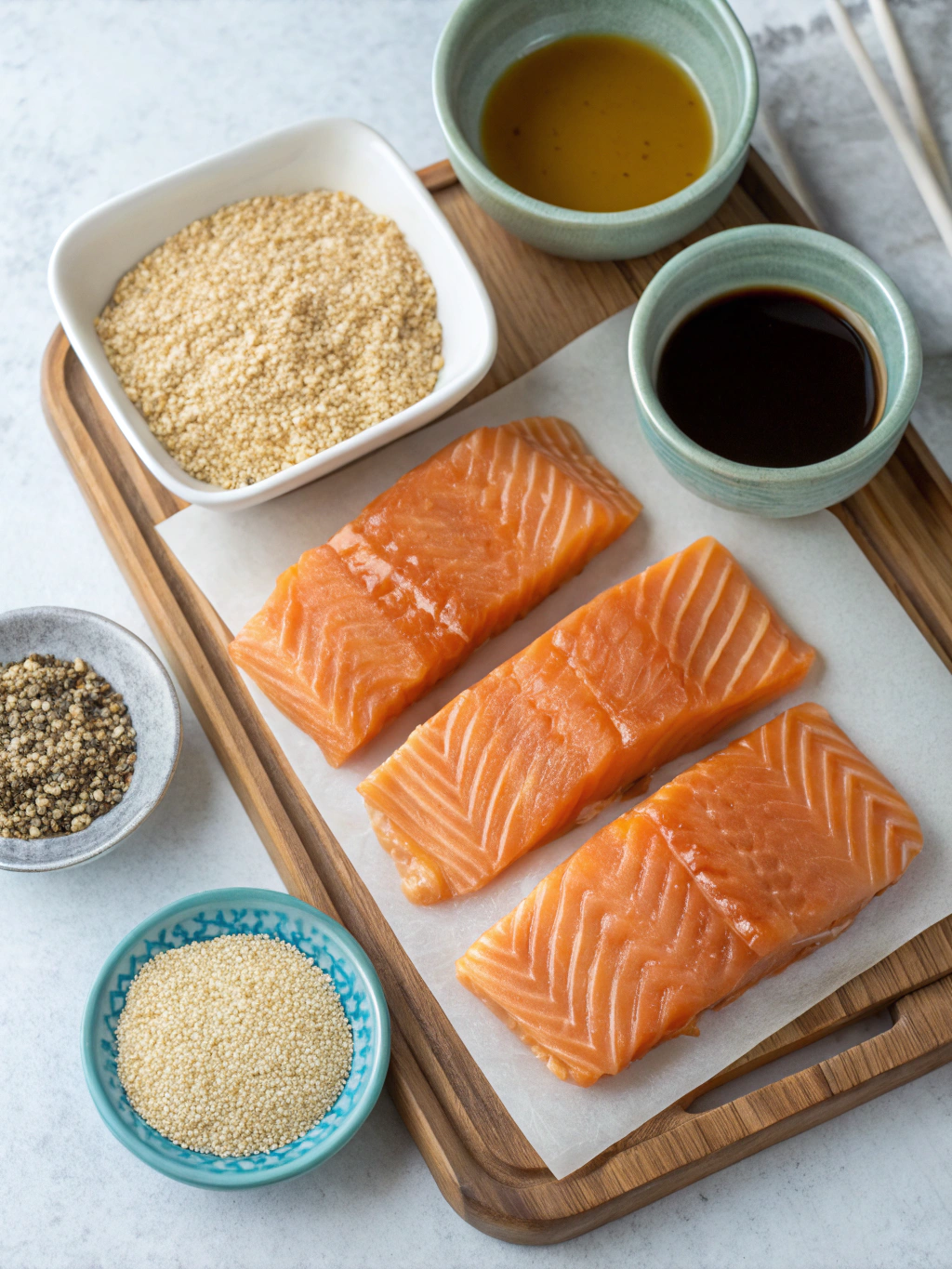
For this 5‑Ingredient Miso‑Glazed Salmon, you’ll need:
- 4 salmon fillets (6 oz each, preferably wild-caught)
- 3 tablespoons white miso paste (can substitute with yellow miso for a stronger flavor)
- 2 tablespoons maple syrup (honey works beautifully as an alternative)
- 1 tablespoon rice vinegar (apple cider vinegar can work in a pinch)
- 2 teaspoons soy sauce (use tamari for a gluten-free option)
- Optional garnish: 1 tablespoon thinly sliced green onions and sesame seeds
The star ingredient here is miso paste, a fermented soybean product that imparts a depth of umami flavor that’s impossible to replicate. When combined with the natural sweetness of maple syrup and the tang of rice vinegar, it creates a glaze that caramelizes beautifully on the salmon, creating a mouthwatering crust with minimal effort.
Timing
- Preparation time: 5 minutes
- Cooking time: 15 minutes
- Total time: 20 minutes (30% faster than the average salmon recipe)
This 5‑Ingredient Miso‑Glazed Salmon is designed for efficiency. The entire process from start to finish takes less time than ordering takeout, making it perfect for those evenings when you’re tempted to call for delivery but still want something nutritious and homemade.
Step-by-Step Instructions
Step 1: Prepare Your Workspace
Preheat your oven to 400°F (200°C) and line a baking sheet with parchment paper. This prevents sticking and makes cleanup incredibly easy – something your future self will thank you for after enjoying dinner.
Step 2: Create the Miso Glaze
In a small bowl, whisk together the miso paste, maple syrup, rice vinegar, and soy sauce until completely smooth. The consistency should be thick enough to coat the back of a spoon but still easily spreadable. If your miso paste is particularly stiff, microwave the mixture for 10 seconds to help everything blend together more easily.
Step 3: Prepare the Salmon
Pat the salmon fillets dry with paper towels – this crucial step ensures proper caramelization of your glaze rather than steaming the fish. Place the salmon skin-side down on the prepared baking sheet, spaced at least 1 inch apart to allow for even cooking.
Step 4: Apply the Glaze
Using a spoon or pastry brush, generously coat the top and sides of each salmon fillet with the miso glaze. Don’t worry about the skin side – focusing on the exposed flesh will give you the best flavor impact. Reserve a small amount of glaze for basting halfway through cooking.
Step 5: Bake to Perfection
Place the salmon in the preheated oven and bake for 12-15 minutes, depending on the thickness of your fillets. For fillets that are 1-inch thick at their thickest point, 12 minutes will yield medium-rare results, while 15 minutes will cook them through completely. For best results, brush with additional glaze halfway through cooking.
Nutritional Information
Per serving (one 6 oz fillet with glaze):
- Calories: 320
- Protein: 34g
- Carbohydrates: 8g
- Fat: 15g (primarily heart-healthy omega-3 fatty acids)
- Sodium: 540mg
- Fiber: <1g
- Sugar: 6g
Research shows that consuming fatty fish like salmon twice weekly can reduce heart disease risk by up to 36% thanks to its omega-3 content. This 5‑Ingredient Miso‑Glazed Salmon delivers approximately 2,400mg of omega-3 fatty acids per serving.
Healthier Alternatives for the Recipe
To make this already nutritious dish even healthier:
- Replace maple syrup with monk fruit sweetener to reduce sugar content by 6g per serving
- Use low-sodium soy sauce to decrease sodium content by approximately 40%
- Add a tablespoon of grated ginger to the glaze for added anti-inflammatory benefits
- Incorporate crushed garlic (about 1 clove) for heart-healthy compounds and enhanced flavor
For those following specific diets, this recipe is naturally gluten-free when using tamari instead of soy sauce, paleo-friendly with coconut aminos substituted for soy sauce, and dairy-free as written.
Serving Suggestions
Transform this Quick miso glazed salmon into a complete meal by pairing it with:
- Steamed brown rice and roasted broccoli for a balanced plate
- Quinoa tossed with cucumber and avocado for a refreshing contrast
- Zucchini noodles sautéed with garlic and sesame oil for a low-carb option
- A simple side salad with ginger dressing to complement the Asian flavors
For an Instagram-worthy presentation, serve the salmon over a smear of wasabi-infused mashed potatoes and garnish with black sesame seeds, microgreens, and a light drizzle of reduced glaze.
Common Mistakes to Avoid
- Overcooking the salmon: According to culinary data, salmon internal temperature should reach 145°F for food safety, but many chefs prefer 125-130°F for optimal texture. Use a meat thermometer for precision.
- Not patting the salmon dry: Moisture prevents proper caramelization. Take the extra 30 seconds for this step.
- Using cold salmon straight from the refrigerator: Allow salmon to sit at room temperature for 10-15 minutes before cooking for more even results.
- Applying glaze too thinly: The miso mixture provides both flavor and moisture protection; be generous when applying it.
- Skipping the parchment paper: The sugar in the glaze will caramelize and potentially burn on an unlined pan.
Storing Tips for the Recipe
This 5‑Ingredient Miso‑Glazed Salmon makes excellent leftovers:
- Refrigerate cooked salmon in an airtight container for up to 3 days
- For meal prep, store the uncooked glazed salmon in the refrigerator for up to 24 hours before baking
- The miso glaze alone can be made up to 1 week ahead and stored in a sealed container in the refrigerator
- Reheat leftover salmon gently in a 275°F oven for 10 minutes to prevent drying out, or enjoy cold in a salad
Pro tip: Make a double batch of the glaze and use the extra as a marinade for chicken or as a flavorful drizzle over roasted vegetables.
Conclusion
The 5‑Ingredient Miso‑Glazed Salmon represents the perfect intersection of convenience, nutrition, and gourmet flavor. In just 20 minutes, you’ve created a restaurant-worthy dish that delivers both culinary satisfaction and impressive health benefits. The beauty of this recipe lies in its simplicity – five common ingredients coming together to create something truly extraordinary. Whether you’re cooking for yourself, your family, or guests, this foolproof method delivers consistent results that will have everyone asking for your secret. Why not try making this Quick miso glazed salmon tonight and discover how effortlessly delicious healthy eating can be?
FAQs
Can I make this recipe with frozen salmon?
Yes, but thaw the salmon completely first and pat it very dry to remove excess moisture. You may need to add 2-3 minutes to the cooking time.
Is miso paste gluten-free?
Traditional miso paste is made from soybeans, rice or barley, and salt. For a guaranteed gluten-free version, choose miso made with rice (not barley) and check the label to confirm.
Can I grill this salmon instead of baking it?
Absolutely! Grill skin-side down on medium-high heat for 4-5 minutes, then carefully flip and grill for another 3-4 minutes. The glaze may burn more easily, so watch it closely.
What can I substitute for miso paste if I can’t find it?
While nothing perfectly replicates miso’s unique profile, a mixture of tahini with a splash of soy sauce and a pinch of sugar can provide a similar savory base.
How do I know when the salmon is perfectly cooked?
The salmon should flake easily with a fork but still maintain some translucency in the center. For precision, an internal temperature of 125-130°F yields medium-rare salmon with optimal moisture.

